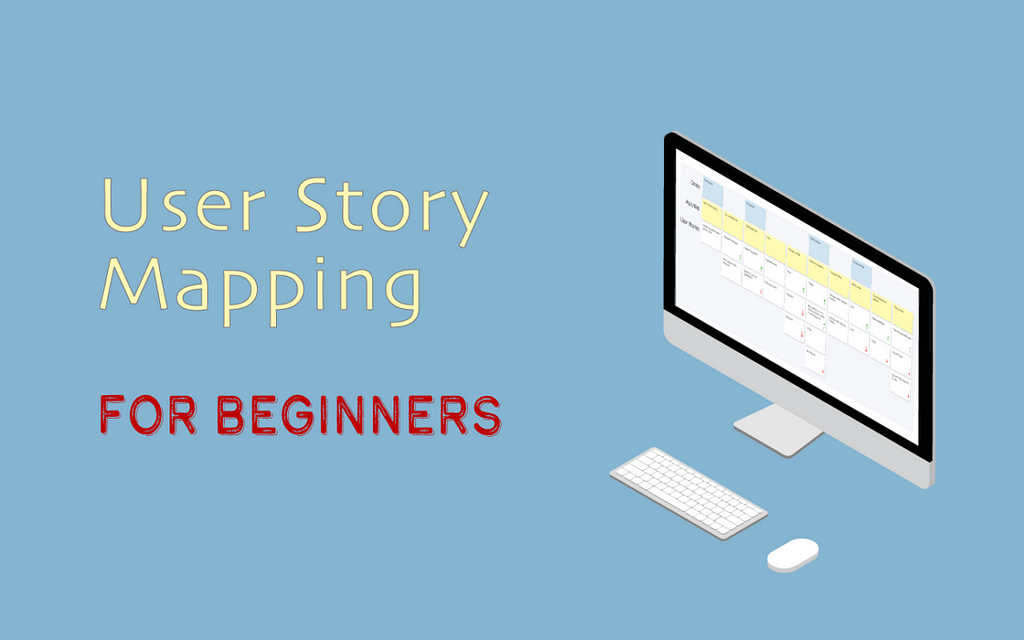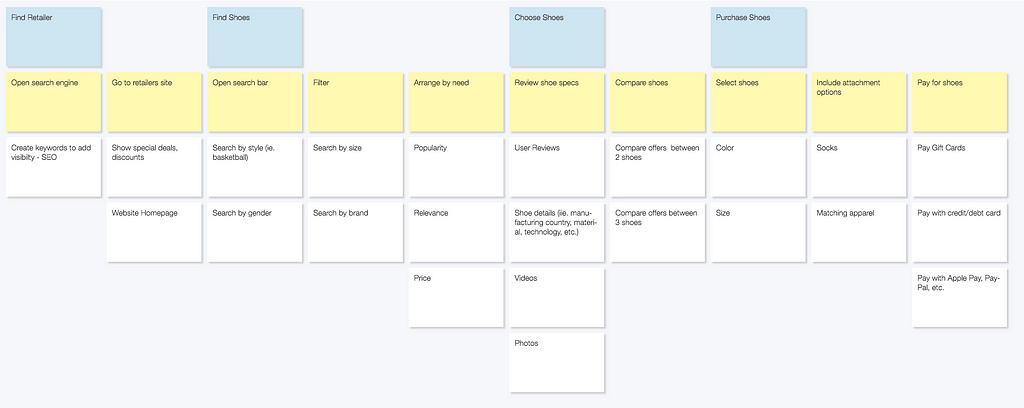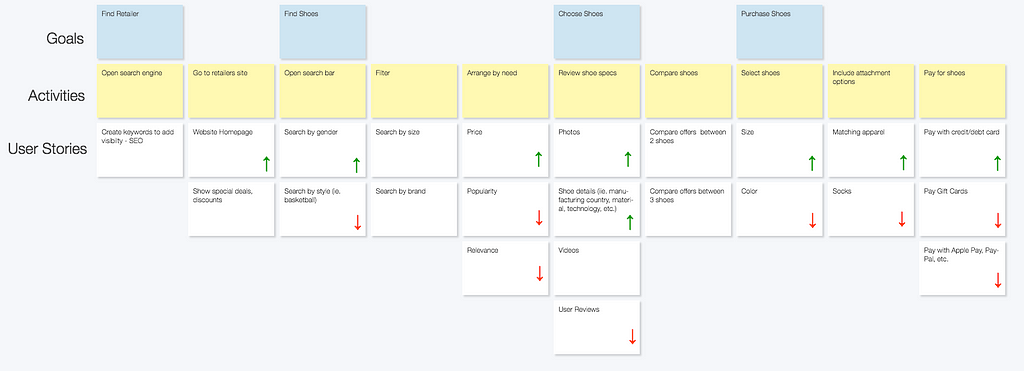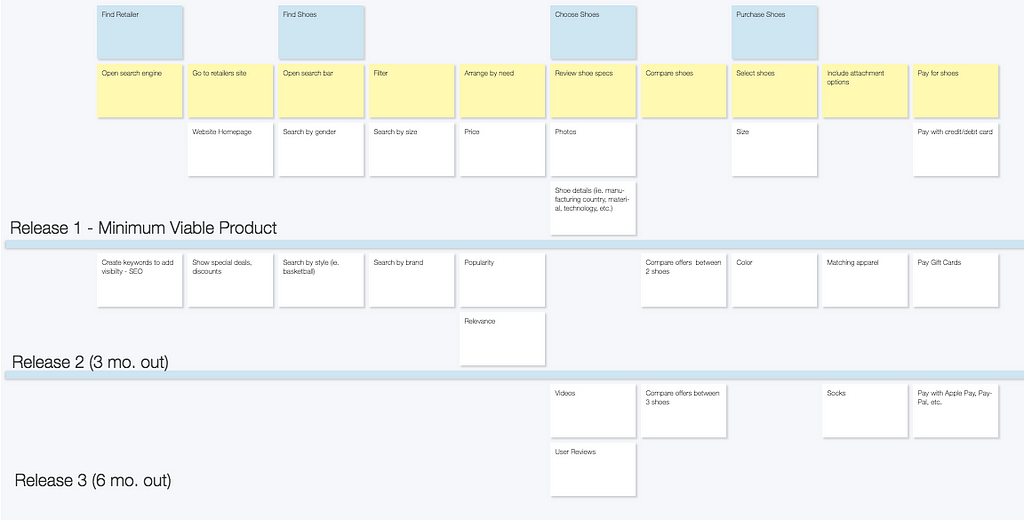Latest news about Bitcoin and all cryptocurrencies. Your daily crypto news habit.

User Story Mapping (USM) allows for project managers, developers and designers to put a method behind the continuous complexity of product design and creating an awesome User Experience (UX). Creating with USM allows for developers to create products and processes which are user-centered and user experience focused.
The process begins with keying in on user goals, and breaking down the product/process through understanding the problem at hand. Each step that the user takes to reach the goals are collected and listed. Simply follow the journey and narrative to uncover each step involved in the user’s activity. Create a solutions to improve the product, maybe even multiple to create user stories, a tool that helps you have shared understanding within your team.
By organizing the goals, activities and user stories, you can create an easy to follow visual that an entire team can understand, prioritize, and follow. This is known as a user story map. Project managers, developers and designers need a simple visual to organize goals and understand the customers. Members of the team can then follow with the goals, activities and user stories with a organized map that can be easily updated and improved with the visual aid USM provides, increasing shared understanding.
To summarize, User Story Mapping provides an easy-to-follow visual that cultivates shared understanding
STEP 1 — DISCOVERY PHASE — UNDERSTAND THE GOALS
To begin, you draw in on customers and the actions they do in order to achieve a defined goal. Create a summary for the goals the user achieves by using your product. For each goal identified, write it on a card, and arrange the cards in logical timeline for which they occur first. For an example, if a user wanted to purchase a pair of shoes their goals would be:
“find a retailer, find shoes, choose shoes, purchase shoes.”
This can be broken down even further for a specific user and their goal can be to “find basketball shoes”, “choose the best shoes”, “purchase least expensive shoes.”
STEP 2 — DISCOVERY PHASE — Detail the Journey
Once the goals are defined, then focus in on detailing the user’s journey by adding activities. Each step the user takes to accomplish the goals are posted under the goals. This provides a visual to understand the pieces that attribute to completing a goal and moving on to the next. For example, to find a retailer, a user will first open their search engine, select a retailer among the results, then begin the process of shoe hunting on the selected site.
STEP 3 — DESIGN PHASE — CREATE THE SOLUTION
You have understood and defined goals, you detailed the user’s journey. What’s next? Creating solutions. Once the discovery phase has concluded you now move into the design phase. As a user you have a specific goal. To achieve it, there are steps you must take.
To break it down, a user seeking new shoes wants to find a reliable retailer to purchase a pair of basketball shoes. They could be looking for discounts, a specific brand, and a certain size. With different user types, you must be prepared to handle the needs of the various users. To prep, user stories that a developer identifies are arranged under the relevant activities. Check it out:
STEP 4 — DEVELOPMENT PHASE — PRIORITIZE TASKS
The User Story Map can fill up quickly with ideas, which means more work for a team. It is important to note that different tasks, or user stories, have a different level of priority. Certain tasks (user stories) are more crucial to the success of the product, others add support, but may not be the most important pieces required to releasing a product.
STEP 5 — DEVELOPMENT PHASE — RELEASE
In the world of fast pace, ever changing demand, it is important to identify what is the smallest working product that can be released as quick as possible. Meaning, of the features listed, how many can be added, and more importantly removed and still have a marketable product. In the startup community, we call it the Minimum Viable Product (MVP). With time and financial constraints it becomes extremely difficult to choose which pieces must be left out in each release. However, focusing on the most common and easiest to develop tasks it allows developers and designers to to prioritize and key in on what matters most initially in a user’s journey.
The rest of the tasks (user stories) pushed into backlog and may be developed as time passes. Tasks (user stories) are separated by horizontal lines between cards that show a different release over a period of time. Schedules and time estimates can be added to better understand the timeline of the product and its life cycle. Providing a better estimate of potential costs and time.
STEP 6 — IMPROVE AND REPEAT
As your product and business grows the opportunity to utilize USM will also increase. Each time you navigate through the process there will be hiccups within the creation of the product and lessons learned. Improve upon what you learned and repeat the USM process.
By using USM it will pay huge dividends and lead to growth in your product and business. Each time you navigate through the process you will learn and feed that learning back into the next iteration.
When you do USM, you can expect the following outcomes:
- Better Product by better understanding your users
- Quicker to market by not overbuilding unnecessary features
- Reduction in costs by not wasting time on non-value add activities
Think User Story Mapping can help you or your business out? Check out cardboardit.com and sign up for your free 30 Day Trial today!
Find us on social media!
Facebook, Twitter, and LinkedIn
Originally published at cardboardit.com on October 15, 2018.
User Story Mapping For Beginners was originally published in Hacker Noon on Medium, where people are continuing the conversation by highlighting and responding to this story.
Disclaimer
The views and opinions expressed in this article are solely those of the authors and do not reflect the views of Bitcoin Insider. Every investment and trading move involves risk - this is especially true for cryptocurrencies given their volatility. We strongly advise our readers to conduct their own research when making a decision.






